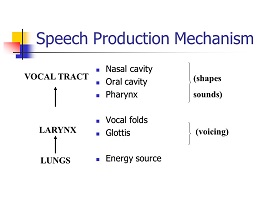Types of airstream mechanism Egressive Ingressive Pulmonic
It is impossible to understand human speech sounds without having a perception of the Types of Airstream Mechanism. when we speak, the air comes out from our lungs and different articulators involve in the speech uttering process. in this article, we will describe the airstream mechanism with explanation and make the readers aware of its true objectives.
Airstream mechanism
In phonetics, the mechanism of the air stream is the method by which airflow is created in the vocal tract. Along with phonation and articulation, it is one of the three main components of speech production. The mechanism of the air stream is mandatory for sound production and constitutes the first part of this process, which is called initiation. The organ that generates the air current is called the initiator and there are three initiators that are used in spoken human languages.
- the diaphragm along with the ribs and lungs (pulmonary mechanisms),
- the glottis (mechanisms glottal)
- the tongue (lingual or “velar” mechanisms)
Airstream mechanism Explanation
The manner in which an airstream is set in motion for the purposes of speech. Airstream mechanisms may produce ingressive (inward) or egressive (outward) airflow. An airstream mechanism consists of the movement of an initiator. Speech sounds are produced with one of three airstream mechanisms, or occasionally by a combination of two of these. The mechanisms are
| Name | Initiator | Egressive | Ingressive |
| Pulmonic | lungs | most speech sounds | |
| Glottalic/Pharyngeal | closed glottis | ejectives | voiceless implosives |
| Velaric/Oral | velar closure | clicks | |
| Velaric + Pulmonic | voiced clicks | ||
| Pulmonic + Glottalic | voiced implosives |
The organ generating the airstream is called the initiator; for this reason, the production of airflow is called initiation. There are three initiators used in spoken human languages: the diaphragm together with the ribs and lungs (pulmonic mechanisms), the glottis (glottalic mechanisms), and the tongue (lingual or “velaric” mechanisms). Each may act by increasing pressure in the airstream or by reducing it with suction. These changes in pressure are often said to involve outward and inward airflow, and are therefore termed egressive and ingressive mechanisms; however, ingressive mechanisms often only reduce outward airflow. Of these six possible airstream mechanisms, four are found in words around the world.
1-Egressive Pulmonic Airstream:
The majority of human sounds are produced by an egressive pulmonic airstream. This movement describes an outgoing airstream produced by the lungs and is regarded as the only airstream mechanism that uses lung air.
All English sounds (both consonants and vowels) are produced by an egressive pulmonic air-stream mechanism because we speak while we expel air from our lungs (this type of airstream mechanism is also common in other European languages).
2-Egressive Glottalic Airstream:
In other languages such as African languages, speech sounds are produced by a different air-stream. In this case, the air is used in the mouth to produce speech. Therefore, the air is pushed up from the glottis and makes the air move outwards. This sound is called ejective (represented in the IPA as [p’], voiceless, e.g. pin). Ejectives are not common in European languages but they are common in the native languages of North America, particularly in the Pacific Northwest.
3-Ingressive Glottalic Airstream:
This airstream describes a movement, initiated by the larynx in which air is going inwards by the glottis, and the sound is implosive (voiced bilabial implosive or voiced velar implosive). None of these airstreams occur in English!
4-Ingressive Velaric Airstream:
The tongue pushes the air against the velum. As a result, the air is stopped from moving further back. Therefore, the rest of the air is drawn into the mouth further forward, and the closure with the tongue is released to make an oral click sound. The best-known click languages that are made of ingressive mouth air are Zulu and Xhosa (South African languages) both can be of voiced or voiceless sounds
